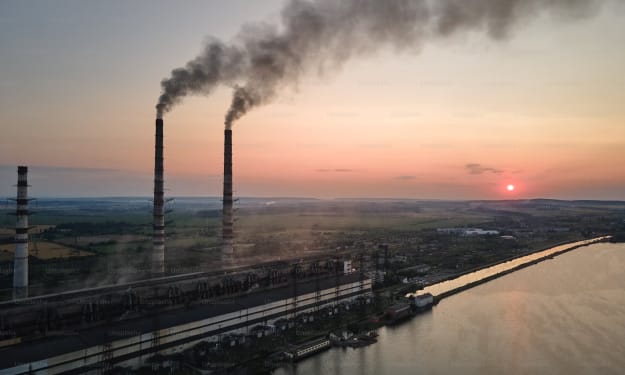Fishing Fish
Deep Sea Fishing; the Hunt for Black Halibut Across Greenland
German deep-sea fishermen face harsh conditions while searching for black halibut. Their ships are specifically designed to withstand loads exceeding 1000 metric tons and to navigate through the toughest waters. Accuracy in fish processing is essential, as the catch is delivered directly to the customers. The preparation and challenges of a fishing expedition involve stocking up on supplies for a journey lasting several months. The technical aspects and responsibilities of the crew members are crucial for the success of the mission. The ship undergoes a performance test before setting sail to Norway. The dry dock is flooded to assess the ship's buoyancy and readiness. The vessel is hoisted and readied for the journey to Norway. Maintaining the stove is vital for efficient cooking and meal preparation at sea.
Keeping the stove running 24 hours a day is necessary to avoid delays and speed up the cooking process. Providing satisfying meals to boost crew morale poses challenges and requires dedicated efforts. Establishing everything anew is essential for safety and mission success, following a systematic approach that begins with the most challenging tasks. Steel cables are joined together to form a sturdy rope that supports the fishing net. The significance of teamwork and camaraderie is evident at sea, where men assist each other during the lengthy periods spent on the water, offering help wherever necessary. The absence from home presents challenges as sailors encounter personal difficulties and constraints. Maneuvering through perilous icebergs in the North Atlantic poses a threat to the ocean trawler Mark. Fish processing tasks demand meticulous attention to detail. Preparations for fishing in the ocean involve attaching the nets to a heavy steel cable known as a troll warp. The equipment must endure immense forces, with Bosun Dennis Bachat taking charge. The fishing expedition commences with optimism and cutting-edge equipment. Fishing reports indicate a respectable daily catch of 15-17 metric tons. The use of advanced equipment, such as a state-of-the-art fishing net equipped with sensors for monitoring, is crucial. Lowering the fishing net into the ocean to capture fish requires careful preparation. The process involves lowering the net into the water and releasing the steel cable.
The intricacies of sinking the net and utilizing troll doors to prevent entanglement and guide the fish are essential. Securing and adjusting the heavy troll doors on the ship deck is a meticulous task. Employing an iron chain to hoist the six-ton door, coordinating with the bridge for additional lines, and operating the winch are all part of the process. The captain supervises the catch, emphasizing the importance of swift fishing. The net is lifted by a crane for easy unloading, with the fish being directed through the hatch into the processing plant tanks. The need for quick fishing to generate revenue underscores the necessity for a balance between speed and safety. The operations and challenges faced by fishing ships are numerous. Fishermen catch up to 765 tons before reaching their quota. Proper packaging and labeling are essential for accurate shipment. Maintaining the forklift and engine on board the trawler is crucial for smooth operations. Regularly charging the battery and heating the vehicle are necessary for the forklift to function properly. Daily maintenance tasks involve cleaning the oil filter and checking engine levels. Sailors face challenging conditions during storms, working long shifts with minimal rest. Remaining alert and adapting to rough seas and strong winds are vital. Injuries can occur on board during storms, and proper treatment is necessary. Precautions must be taken during storms to ensure the safety of the crew.
Weather changes can impact fishing output, posing challenges for deep-sea fishermen who require 10 tons of fish per catch for profitability. Fishing conditions and catch potential are affected by weather fluctuations. Fishing operations are conducted under a German flag, with fishing quotas tied to nationality. Detailed communication with authorities and shipping companies is crucial for successful fishing operations. A diesel engine failure can result in a power outage and drifting of the ship. The diesel engine, with up to 5000 horsepower, supplies power to the fish processing plant. The ship's emergency system, located behind the main engine, can be controlled by the chief as long as the main systems are operational. The ship is adrift in the North Atlantic due to a blackout caused by the main engine failure, with both nets entangled in the propeller. Technicians are currently working on using a backup motor to restore power, while the crew awaits instructions. The trawler's journey has been halted, and the crew is considering options such as getting divers to cut the nets loose or arranging for a tow back.
The backup diesel engine provides power for winches, but the propeller and rudder are blocked. The crew requires a deep-sea rescue mission, as the ship's rudder is nearly blocked, limiting its influence on direction. The captain is coordinating with an Icelandic Ocean trawler for a tow line to safety, and a towing operation is underway between the ocean trawler Polar Nanok and the German trawler Mark. Grappling hooks are being exchanged between the two ships, and a cable has been successfully transferred from Polar Nanok to Mark. The ocean trawler Mark is being towed to a Greenlandic port, with a 20-hour journey to Nuke, and there is uncertainty about the impact on fishing operations. The diver is struggling to disentangle the propeller from the nets. The nets have become tangled around the propeller, making it challenging to inspect. The diver intends to use a small knife to cut the nets during the next attempt. The diver is working to remove the fishing nets that are stuck in the propeller. The diver is facing difficulties as the nets are stuck over 40 meters in the propeller.
The team is unsure about the progress and how it will impact the voyage. Sailors are preparing nets for fishing, manually stitching 40 meters for each net. The ship is ready to resume fishing after the propeller damage. The ocean trawler Mark completes a fishing tour in record time. The team has proven to be efficient and adaptable, handling extreme situations with mastery. The men are hoping for a good catch to earn money and are swiftly preparing the nets for fishing activities.
About the Creator
Isaac Ekow Anyidoho
A calm person with a cascading mind filled with ideas of my own and know that; I can make a difference with the support of people like you. Thank you.
Enjoyed the story? Support the Creator.
Subscribe for free to receive all their stories in your feed. You could also pledge your support or give them a one-off tip, letting them know you appreciate their work.






Comments
There are no comments for this story
Be the first to respond and start the conversation.